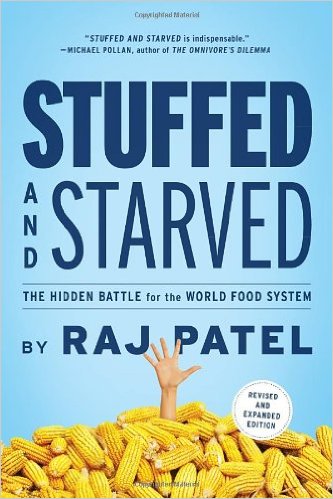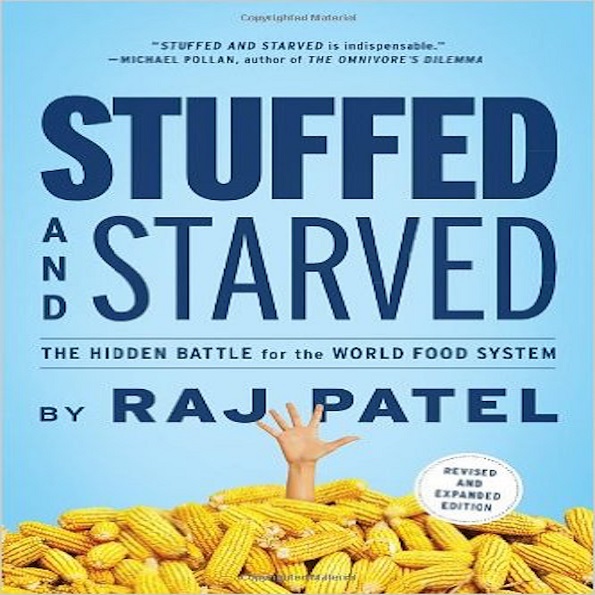“It’s been 48 sols since I planted the potatoes. So now it’s time to reap and re-sow. They grew even better than I expected. I now have 400 healthy potato plants. I dug them up being careful to leave their plants alive. The smaller ones I’ll reseed, the larger ones are my food supply. All natural, organic, martian-grown potatoes. You don’t hear that every day, do you?” – The Martian
All natural, organic – yes. Martian-grown err no. Luckily on planet Earth, if we need natural, organic potatoes, we just need to walk/ drive to our nearest market or organic store and pick them up. It’s that simple. So is the decision to switch to a particular diet or source for our food. As our food choices become increasingly specific we have also found ways and means to fulfill them. I think a more accurate outlook would be that ways and means to fulfill them are presented to us. When we look at this side of the spectrum in totality, it looks like the food system works. Now shift your gaze to the side and look at someone who does not care if their potatoes are organic or natural- just as long as they get enough potatoes to feed themselves. Look further at the producer of these organic natural potatoes. Does the system truly work? This was the question that I was left with when I finished reading Stuffed and Starved by activist, journalist, academic and writer Raj Patel. The food predicament is right in front of us. We are stuffed, we are starved.
In 1970, cultural anthropologist Margaret Mead wrote in her paper The Changing Significance of Food
“In a world in which each half knows what the other half does, we cannot live with hunger and malnutrition in one part of the world while people in another part are not only well nourished, but over-nourished.”
Stuffed and Starved was first published in 2007.In all the years between and since then, Mead’s lines resonate an issue which is pertinent even today (especially today?). With the best of technology and scientific development in our hands, a future Mark Watney who comes back from colonizing Mars might find this discussion incredulous. But that is what Stuffed and Starved reveals. The producer and the consumer cannot be connected by a few dotted lines. It’s a maze, or as Patel puts it, a battlefield. “The food system is a battlefield, though few realize quite how many casualties there have been. While consumers have been only recently wrestling with the problems of how to eat well, farmers have long been fighting against the vanishing of their freedoms, and their battle continues today.“

An objective analysis of the entire food system is a mammoth task. In Stuffed and Starved we see the impact of trade agreements, food aids, war, Green Revolution, farmer debts, the pesticide industry, and even the design of our supermarkets on our food choices and our food related issues. Clearly, there is a lot that needs to be understood to grasp the situation better, but not all of it is about food itself. For example about the Golden Rice, Patel writes -“The best that crops such as the Golden Rice can do is provide a supplement in diets where nutrients are unavailable. And when a balanced diet is unavailable, the cause has more to do with poverty than with anything that can be engineered into the crop. It is absurd to ask a crop to solve the problems of income and food distribution, of course. But since this is precisely the root cause of vitamin A deficiency, the danger of crops such as the Golden Rice is not merely that they are ineffective publicity stunts. They actively prevent the serious discussion of ways to tackle systemic poverty.”
Stuffing and Starving are not a black and white issues where we can bunch populations on either end. Think of the way gender dynamics play into nutrition availability. In his TEDMED talk “The Secret Ingredient For Ending World Hunger“, Patel says “There is no magic bullet with which we can feed the world.” Then what is the secret ingredient? “Organize for Gender Equality“, says Patel. Over the next ten minutes, he goes on to explain a “technology” that has shown them significant impact in Northern Malawi. While working on the “Soils, Food and Healthy Communities Project,” they set up farmer research groups in Malawi with the help of the residents. The women in Malawi worked to increase crop diversity and in turn increase nutrition, as they were earlier mainly dependent on corn for their food. The bottleneck was harvesting- a process done by women . With more crops to harvest ,managing their household chores, cooking, and breastfeeding the children became difficult. The brunt of increased food availability was observed as a decrease in cooking and feeding their children, and in turn, lead to undernourishment and stunting. By involving men in the cooking process, they were able to observe a marked change in the scenario and saw reduced admissions to the Neonatal Rehabilitation Unit in Ekwendini Mission Hospital.
But the impact of gender disparity on nutrition is not restricted to Malawi. In many households women who make nutritionally rich meals often do not have access to them. They eat after everyone and the meal by then is nutritionally lopsided. This fact becomes even more important during prenatal and postnatal stages, in which case the damage affects future generations as well. The politics of food maybe something which is beyond our control. But if we look around, many issues with the food system exist at a microcosmic level in our own surroundings. We may not be able to fully comprehend or influence the larger aspects of the food system. But we sure can ensure that within our immediate vicinity, we prioritize food for everyone equally.
Stuffed and Starved is essential to consume albeit difficult to digest. The facts are hard hitting, but they need to be known. When I wrote “The Story Of My Plate”, I chose to emphasize on understanding the source of our food, and the plight of the farming community. Here the attempt has been to show some of the other factors, with a little more emphasis on the role of gender disparity. But not all of it bad news. Looking at examples shared in this book and as seen around us, several food-based social enterprises are rising up to the challenge. They make food work for the producer and the consumer- and everyone in between. We can choose to blame the system unilaterally, or we can choose to educate ourselves and work in the right direction. As Patel writes at the end of his book “It is time to organize, educate, savour, reclaim and build anew.“

